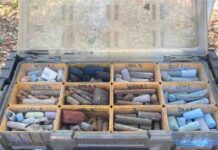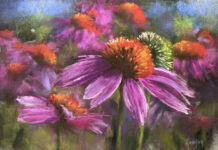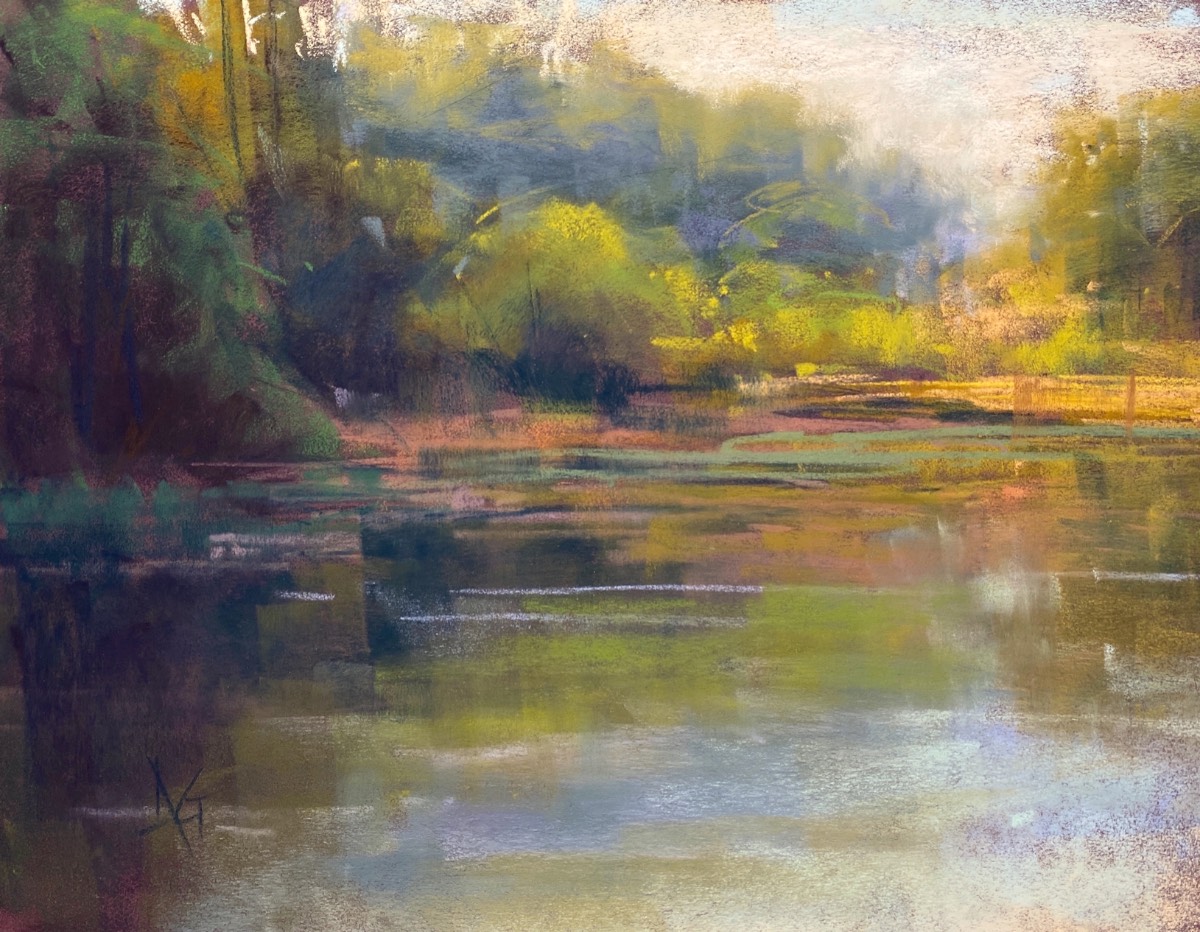
Pastel Tutorial: A Step-by-Step Demonstration
“It’s usually so green in the Northwest where I live, but the colors are different in winter with the dead grasses,” says Alejandra Gos. “It was very cold when I went out to paint this demo, but I was attracted to the reflections in the water and the shapes of the grasses.” The artist often tries out four or five thumbnail sketches of different arrangements in her sketchbook before starting a composition on pastel paper.
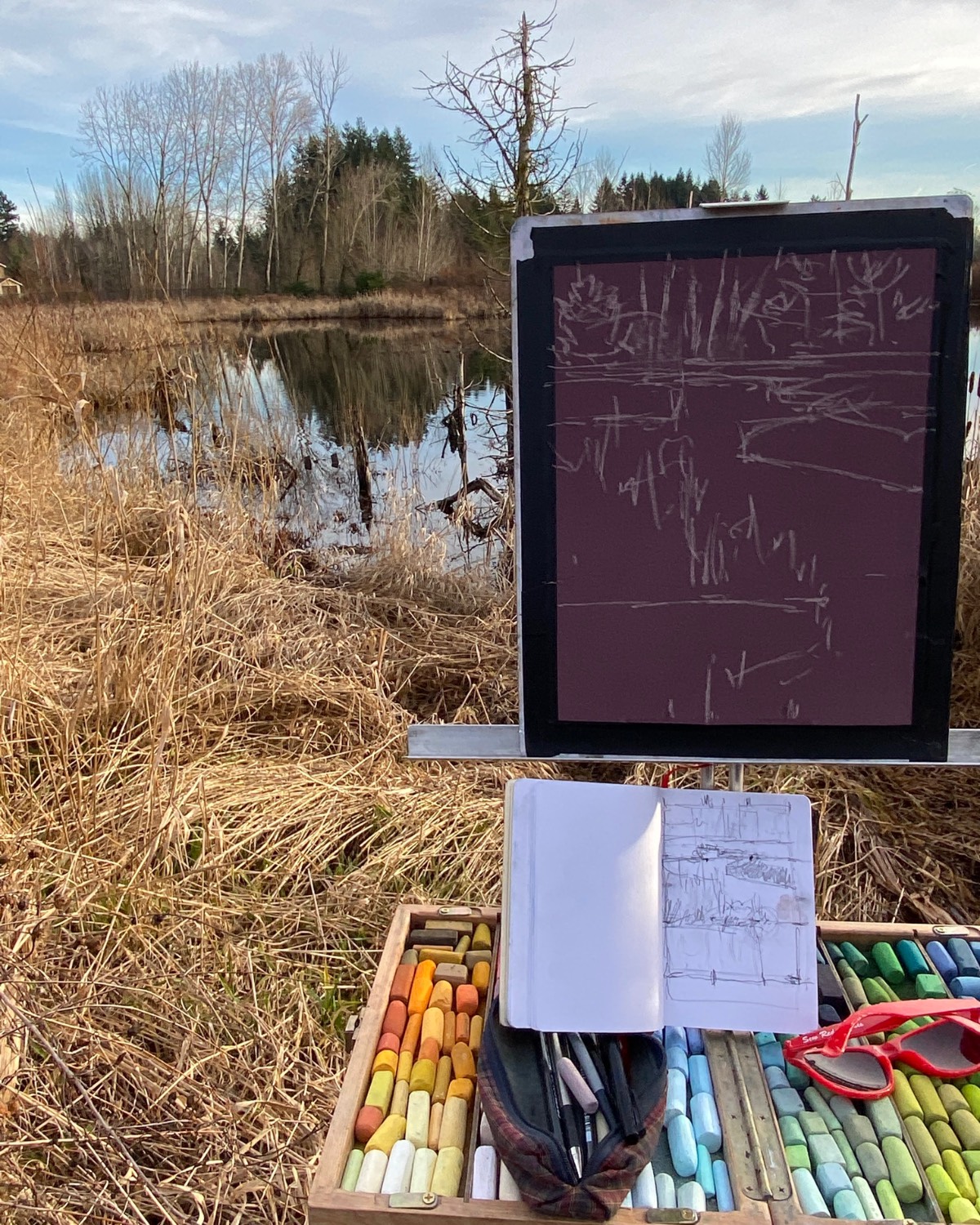
STEP 1
“I knew I had to come up with a good composition because the existing shapes weren’t perfect for a painting,” says the artist. “I devised one that made sense and was attractive. The inspiration was there, and the color, but it called for made-up shapes.” Gos says she looks for four or five big shapes to block in the composition.

STEP 2
“Marshes look endless, so I needed to put softer looking trees in the background and have something more defined in the foreground. The idea is to guide the viewer’s eye into the painting, follow the water in the marsh to the background, then lead the way back,” says Gos, who usually chooses a vertical format for her paintings. “I feel like I can show more depth in the portrait orientation than the landscape orientation,” she explains.” I’m not much of a sky painter; I’m definitely more attracted to the ground. I like a high horizon and a lot of foreground, so this is a very typical composition for me.” Here, she created a sense of depth by overlapping shapes. Her approach is often to place an element, then break it up with water color or sky color. In other words, she fully embraces the idea of putting “sky holes” in after the trees are suggested, or carving in some water color to break up the foreground grasses. Her goal is to add more information, but gently and softly.

FINAL STEP
At the end of her painting session on location, and with a few strokes back in the studio, Gos put the finishing details on the piece. She softened the background a bit to knock back some of the vertical lines she made in the trees, tweaked spots that needed attention, and scrutinized her values. “I have to be careful that a painting done on location isn’t too dark because it’s hard to see accurate darks outside, especially if it’s sunny,” she says. “Although I’ll sometimes fix a painting when I get home, generally I try not to, because I can lose the freshness that I got out there.”
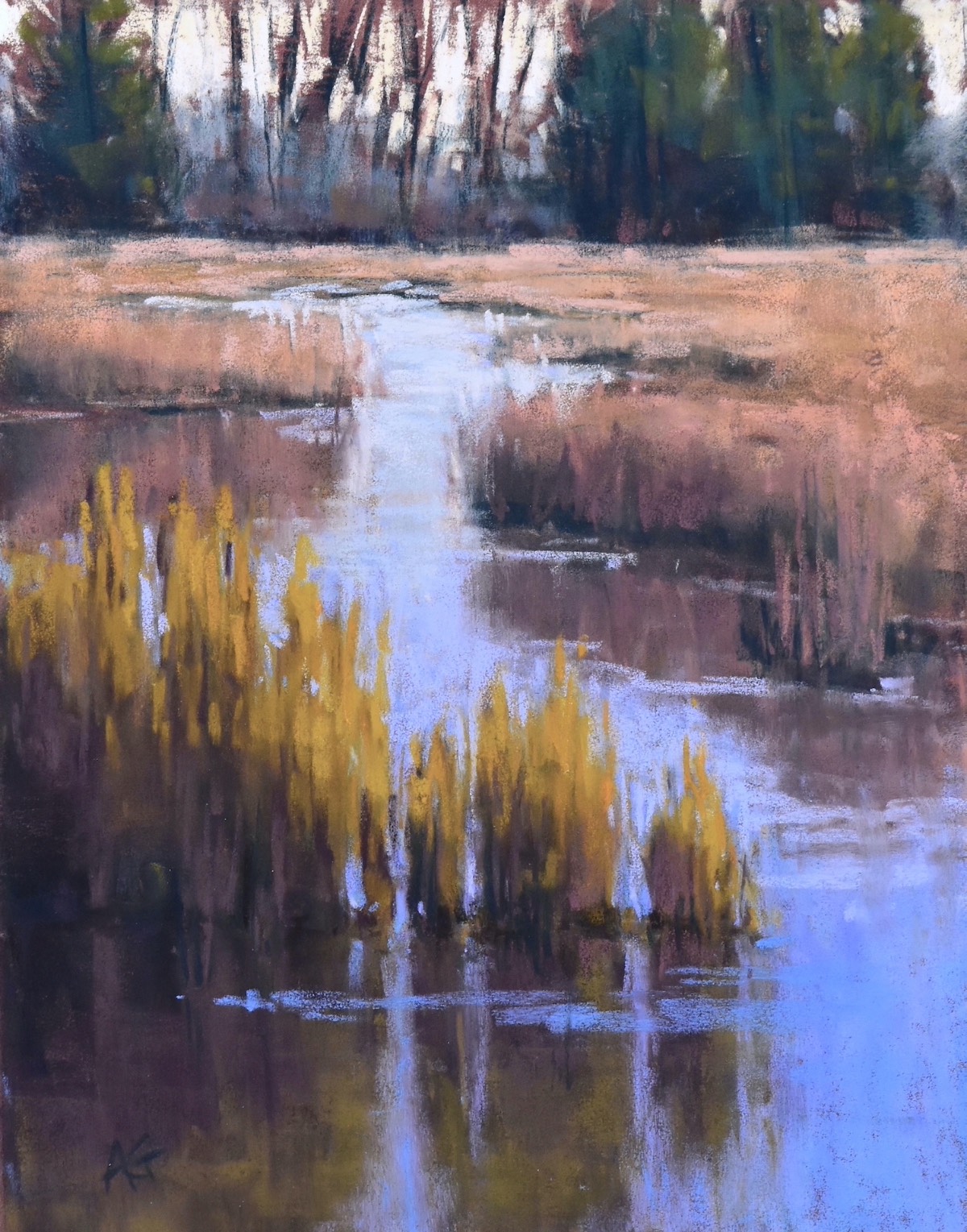
Master pastel landscape painter shares his best tips and techniques in the Ultimate Pastel Workshop.

